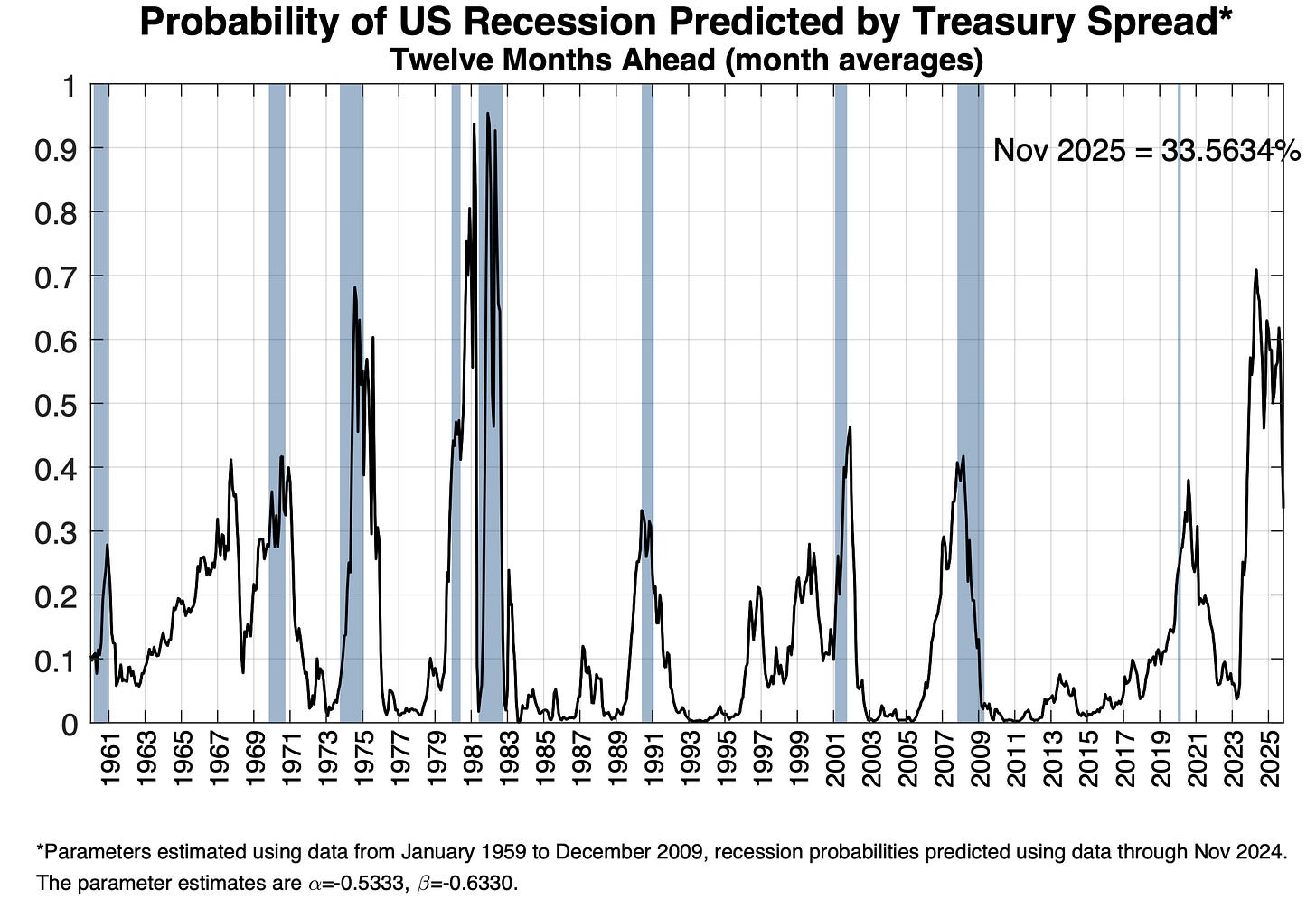An Economic Signal is Showing a 65% Likelihood of a Recession Ahead
Over the decades, the 10-Year/3-Month yield has predicted 100% of the recessions we've had, and it is flashing again
The New York Branch of the Federal Reserve prints a Probability of A Recession every month. This is derived from the difference between the 10-year US Treasury Yield versus the 3-Month yield. The 3 month shows us what is happening in the present. The 10 year yield is more o a prediction based upon longer-term factors. When the 3-month yield pushes up based upon inflationary issues, relative to the 10 year yield, this could signal a potential of a recession ahead in the US economy. If you look at the chart above, the probability has exceeded 71% of a recession ahead based upon this signal.
I have stated repeatedly that the economy is quit robust and that the Federal Reserve should not be, at this point in its cycle, lowering interest rates. Today, the Federal Reserve lowered interest rates again, down an additional 25 basis points, off a full 100 basis points from its previous highs, down to 4.25% - 4.50%. I believe this is premature and the Fed will regret this.
But, there is an X-factor ahead: Trump tariffs. The potential of the Trump tariffs would remove money out of the system. This would stymie inflationary pressures as consumers would have to pay a higher price for goods they purchase coming from abroad. This will lower overall growth. Although the Trump tariffs would raise cash for the US government, consumers paying more for goods purchased would eventually bring aggregate demand down. Revenue growth for businesses would wane, and job losses would increase. This will alleviate any future inflationary pressures. The economy would eventually move into a recession.
Keep reading with a 7-day free trial
Subscribe to D. H. Taylor Analysis to keep reading this post and get 7 days of free access to the full post archives.


